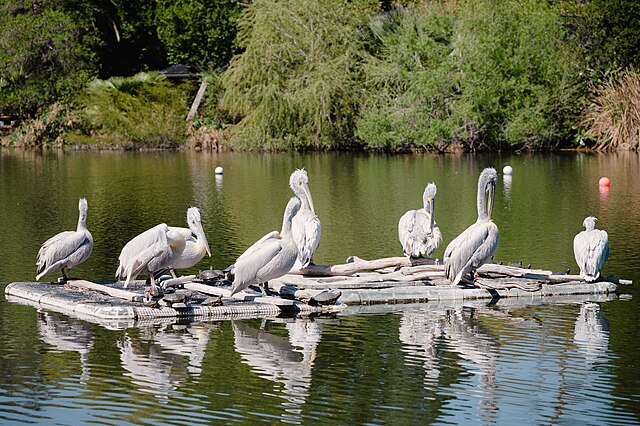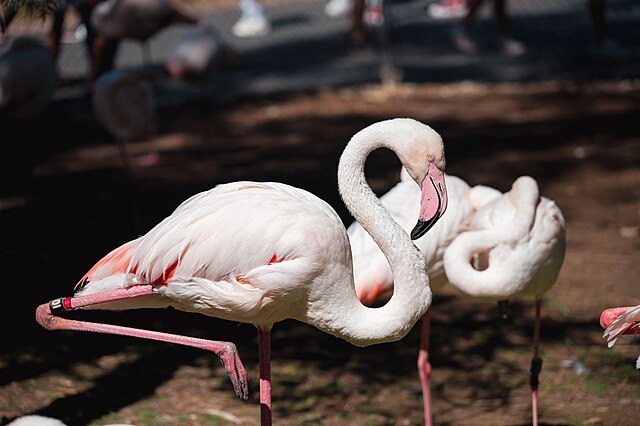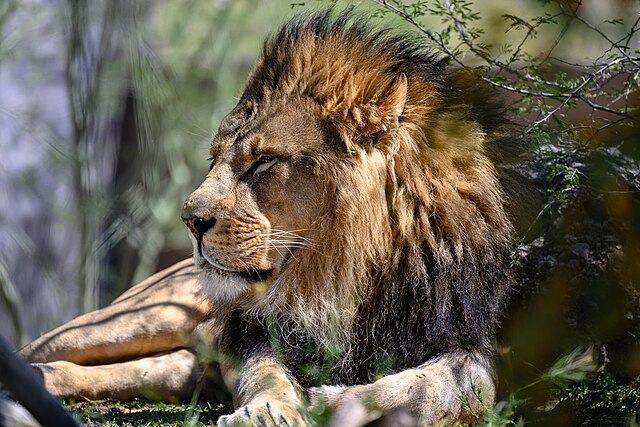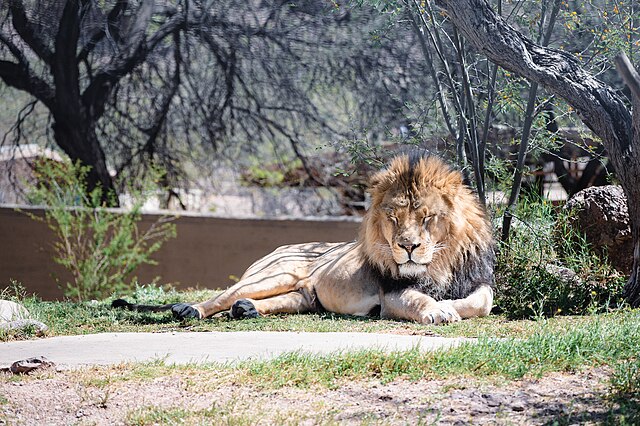Have you ever wondered what it’s like to come face-to-face with a majestic elephant or watch playful otters splash in crystal-clear water? The Phoenix Zoo offers these magical moments and so much more, making it one of the Southwest’s most beloved wildlife destinations. Nestled in the heart of Arizona’s Papago Park, this 125-acre oasis has been captivating visitors for over six decades with its incredible array of animals, innovative exhibits, and commitment to conservation.
Whether you’re a local looking for a weekend adventure or a tourist exploring the Valley of the Sun, the Phoenix Zoo promises an unforgettable experience that combines education, entertainment, and inspiration. From the towering giraffes of the African Savanna to the playful sea lions performing their natural behaviors, every corner of this remarkable facility tells a story of wildlife preservation and wonder.
What Makes Phoenix Zoo Arizona’s Top Wildlife Destination?
A Rich History Dating Back to 1962
The Phoenix Zoo didn’t just appear overnight – it’s the result of decades of passion, planning, and community support. Founded in 1962 by Robert Maytag, the zoo started as a modest facility with big dreams. What began as a small collection of animals has transformed into a world-class zoological institution that houses over 3,000 animals representing more than 400 species.
The zoo’s journey reflects the evolution of modern zookeeping practices. Gone are the days of small cages and concrete enclosures. Today’s Phoenix Zoo features spacious, naturalistic habitats that prioritize animal welfare while providing visitors with immersive experiences. This transformation didn’t happen by accident – it’s the result of careful planning, scientific research, and an unwavering commitment to excellence.
The founders understood something crucial: a great zoo isn’t just about displaying animals; it’s about creating connections between people and wildlife that inspire conservation action. This philosophy continues to guide every decision at the Phoenix Zoo, from exhibit design to educational programming.
Award-Winning Conservation Programs
What truly sets the Phoenix Zoo apart from other attractions is its serious commitment to conservation. This isn’t just a place to see animals – it’s a hub for wildlife preservation efforts that span the globe. The zoo participates in over 30 Species Survival Plans (SSPs), collaborative breeding programs designed to maintain genetic diversity in endangered species populations.
These programs aren’t just about numbers; they’re about hope. When you see an Arabian oryx at the Phoenix Zoo, you’re looking at a species that was once extinct in the wild but has been brought back through dedicated conservation efforts. The zoo played a crucial role in this remarkable success story, and it continues to work on similar projects with other threatened species.
The conservation work extends beyond breeding programs. Zoo researchers conduct field studies, support habitat protection efforts, and work with local communities in wildlife range countries. Every ticket purchased helps fund these vital conservation initiatives, making every visitor a partner in global wildlife preservation.
Essential Information for Your Phoenix Zoo Visit
Location and Getting There

Finding the Phoenix Zoo is easier than tracking a leopard through tall grass. Located at 455 North Galvin Parkway in Phoenix, the zoo sits within the scenic Papago Park, surrounded by distinctive red sandstone formations that create a stunning backdrop for your wildlife adventure.
If you’re driving, you’ll find ample parking available for a modest fee. The zoo is easily accessible from major Phoenix highways, with clear signage directing you to the entrance. Public transportation options include Valley Metro bus routes that stop near the zoo, making it accessible for visitors without personal vehicles.
The location itself is part of the zoo’s charm. Papago Park’s desert landscape seamlessly blends with many of the zoo’s exhibits, creating an authentic Arizona experience. The red rock buttes visible from various points throughout the zoo remind you that you’re exploring wildlife in one of America’s most beautiful desert settings.
Hours of Operation and Admission Prices
The Phoenix Zoo operates year-round, but hours vary by season to accommodate Arizona’s climate and visitor preferences. During peak season (October through May), the zoo typically opens at 9:00 AM and closes at 5:00 PM. Summer hours are adjusted to help visitors avoid the intense desert heat, often opening earlier and closing during the hottest part of the day.
Admission prices are structured to provide value for families while supporting the zoo’s conservation mission. General admission for adults usually ranges from $25-$30, with discounted rates for children, seniors, and military personnel. Annual memberships offer excellent value for frequent visitors and include additional benefits like free parking and member-only events.
Special pricing is often available for Arizona residents, and the zoo frequently offers promotional rates during off-peak periods. Online ticket purchases can provide savings and help you skip the line at the entrance, getting you to the animals faster.
Best Times to Visit Throughout the Year
Timing your Phoenix Zoo visit can make the difference between a good experience and an absolutely magical one. Arizona’s desert climate creates distinct seasons that affect both animal activity and visitor comfort.
Winter months (December through February) offer the most comfortable weather for walking the zoo’s extensive pathways. Animals are often more active during cooler temperatures, and you’ll enjoy clear, sunny skies that make for perfect photography conditions. This is peak tourist season, so expect larger crowds, especially on weekends.
Spring (March through May) brings wildflowers to the desert and moderate temperatures that are perfect for outdoor exploration. Animals are particularly active during this time as they respond to longer daylight hours and pleasant weather. This season offers an ideal balance of comfortable conditions and manageable crowd sizes.
Summer visits require more planning but offer unique advantages. Early morning hours provide cooler temperatures and highly active animals preparing for the day ahead. Many desert species are most comfortable during warmer weather, giving you opportunities to see behaviors you might miss during cooler seasons.
Top 15 Must-See Animals and Exhibits
African Savanna: Where Giants Roam
Step into the African Savanna, and you’ll feel like you’ve been transported thousands of miles from the Arizona desert to the vast plains of Africa. This expansive exhibit represents the pinnacle of modern zoo design, creating an immersive environment that benefits both animals and visitors.
The African Savanna isn’t just one exhibit – it’s an interconnected ecosystem that demonstrates how different species coexist in the wild. Multiple viewing areas provide different perspectives, from elevated boardwalks that offer panoramic views to ground-level windows that bring you eye-to-eye with some of Africa’s most magnificent creatures.
Elephants and Their Impressive Habitat
The elephants are undoubtedly the stars of the African Savanna, and for good reason. The Phoenix Zoo’s elephant habitat spans several acres and includes multiple pools, varied terrain, and specialized care facilities that prioritize elephant welfare.
Watching these gentle giants interact is like observing a complex social drama unfold. Elephants are incredibly intelligent animals with rich emotional lives, and the Phoenix Zoo’s herd demonstrates this through their daily interactions. You might witness playful splashing in the water features, gentle trunk touches between family members, or the impressive sight of an adult elephant using tools to scratch hard-to-reach spots.
The habitat design allows elephants to express natural behaviors that were impossible in older zoo facilities. They can wade through deep water, dig in sand, and explore varied terrain that keeps them physically and mentally stimulated. Multiple viewing areas ensure that even during busy days, you can find a spot to observe these remarkable animals.
Giraffes: Reaching New Heights
Standing up to 18 feet tall, giraffes literally provide a towering presence in the African Savanna. The Phoenix Zoo’s giraffe exhibit includes an elevated feeding platform where visitors can purchase special treats and hand-feed these gentle giants – an experience that creates memories lasting a lifetime.
The feeding experience isn’t just fun; it’s educational. Zoo staff members are present to share fascinating facts about giraffe biology, behavior, and conservation status. Did you know that giraffes have the same number of neck vertebrae as humans? Or that their tongues can extend up to 20 inches to reach the most nutritious leaves?
The giraffe habitat features multiple viewing levels, accommodating visitors of all heights and abilities. Children especially love the ground-level viewing areas where they can watch giraffes’ impressive legs in motion, while adults appreciate elevated platforms that provide better photography opportunities.
Arizona Wetlands: Local Wildlife Showcase

The Arizona Wetlands exhibit proves that the desert Southwest supports incredibly diverse wildlife ecosystems. This area showcases native Arizona species that many visitors never knew existed, from playful river otters to majestic bighorn sheep.
This exhibit serves multiple purposes beyond entertainment. It educates visitors about local conservation challenges and successes while demonstrating how human activities impact native wildlife. The wetlands habitat also serves as a sanctuary for rescued animals that cannot be returned to the wild.
The design incorporates authentic Arizona materials and plant species, creating an environment that looks and feels like natural desert wetlands. Interpretive signs throughout the area help visitors understand the complex relationships between water, wildlife, and human communities in the desert Southwest.
Predator Passage: Big Cats and More
Predator Passage brings you face-to-face with some of nature’s most impressive hunters in safely designed viewing areas that provide excellent visibility while ensuring animal welfare. This section of the zoo demonstrates the incredible diversity of predatory species and their crucial role in ecosystem balance.
The exhibit design prioritizes animal enrichment, with climbing structures, water features, and varied terrain that encourage natural behaviors. Visitors often witness feeding demonstrations that showcase each species’ unique hunting adaptations and dietary requirements.
Jaguars in Their Natural-Style Habitat
The jaguar exhibit represents one of the zoo’s most successful habitat designs, featuring dense vegetation, climbing opportunities, and a large swimming area that allows these powerful cats to display their full range of natural behaviors.
Jaguars are incredible swimmers, unlike most big cat species, and watching them dive and play in the water provides insights into their unique ecological niche. The Phoenix Zoo’s jaguars often demonstrate this behavior, especially during warmer weather when the cool water provides relief from desert heat.
The exhibit’s design includes multiple viewing areas with specialized glass that provides crystal-clear views while maintaining appropriate barriers. Photography enthusiasts particularly appreciate the opportunities for capturing stunning images of these magnificent predators in action.
Mountain Lions of the Southwest
Mountain lions, also known as cougars or pumas, represent one of the Southwest’s most elusive predators. The Phoenix Zoo’s mountain lion exhibit provides rare opportunities to observe these secretive cats up close while learning about their important role in desert ecosystems.
The habitat features rocky outcroppings, caves, and elevated platforms that mimic the rugged terrain where mountain lions naturally thrive. These design elements encourage climbing, jumping, and other natural behaviors that demonstrate the cats’ incredible athletic abilities.
Educational components throughout the exhibit address common misconceptions about mountain lions while highlighting conservation success stories. Arizona’s mountain lion population has recovered significantly thanks to wildlife management efforts and habitat protection programs.
Children’s Trail: Perfect for Young Explorers
The Children’s Trail creates a scaled-down zoo experience perfect for young visitors who might be overwhelmed by larger exhibits. This section features smaller animals, interactive elements, and educational activities designed specifically for children’s developmental needs.
Farm animals, small primates, and colorful birds populate this area, providing opportunities for close encounters that spark curiosity about the natural world. The trail’s design encourages exploration while maintaining safety for both children and animals.
Interactive elements throughout the Children’s Trail teach basic concepts about animal behavior, habitat requirements, and conservation in age-appropriate ways. These experiences plant seeds of environmental awareness that can grow into lifelong conservation commitments.
Interactive Experiences That Create Lasting Memories
Animal Encounters and Educational Programs
The Phoenix Zoo’s educational programs transform casual visits into meaningful learning experiences. These aren’t just brief presentations – they’re immersive encounters that provide deep insights into animal behavior, conservation challenges, and the role each species plays in their ecosystem.
Keeper talks occur throughout the day at various exhibits, providing insider knowledge about specific animals’ personalities, behaviors, and care requirements. These informal presentations allow visitors to ask questions and learn details that aren’t available through traditional exhibit signage.
Special encounter programs offer more intensive experiences for visitors seeking deeper connections with wildlife. These might include behind-the-scenes tours, breakfast with the animals, or specialized photography sessions that provide unique access to exhibits and animals.
Camel Rides and Pony Rides
The camel and pony ride experiences provide hands-on interaction that appeals to visitors of all ages. These aren’t just entertainment – they’re educational opportunities that teach about domestic animal relationships and historical connections between humans and animals.
Camel rides, in particular, offer insights into these remarkable animals’ adaptations for desert life. Visitors learn about camels’ unique physiology, their historical importance in desert cultures, and their continued relevance in many parts of the world.
The rides are conducted by knowledgeable staff members who share interesting facts and ensure safe, enjoyable experiences for all participants. These interactions often become highlight memories of zoo visits, especially for children experiencing their first camel ride.
Behind-the-Scenes Tours
Behind-the-scenes tours provide exclusive access to areas of the zoo typically closed to the public. These experiences reveal the extensive work required to maintain a world-class zoological facility while providing exceptional animal care.
Tour participants visit animal care facilities, food preparation areas, and veterinary clinics where they observe the daily routines that keep zoo animals healthy and content. These experiences provide new appreciation for the complexity of modern zoo operations.
The tours also highlight conservation work, breeding programs, and research initiatives that extend far beyond public exhibits. Participants learn how their zoo visit contributes to global wildlife preservation efforts and scientific research.
Conservation Efforts: Making a Global Impact

Breeding Programs for Endangered Species
The Phoenix Zoo’s participation in Species Survival Plans represents one of its most important contributions to global conservation. These programs coordinate breeding efforts among zoos worldwide to maintain genetic diversity in endangered species populations.
Success stories from these programs include the Arabian oryx, which was saved from extinction through collaborative breeding efforts. The Phoenix Zoo played a crucial role in this program, breeding animals that were eventually released back into their natural habitat in the Middle East.
Current breeding programs focus on species ranging from tiny Panamanian golden frogs to massive Galapagos tortoises. Each program requires specialized knowledge, facilities, and long-term commitment to achieve conservation goals.
Research Initiatives
Zoo-based research contributes valuable knowledge to wildlife conservation efforts worldwide. Phoenix Zoo researchers study animal behavior, reproduction, nutrition, and health in ways that would be impossible in wild settings.
Research findings from zoo animals often directly benefit wild populations through improved conservation strategies, better understanding of species’ needs, and development of new conservation techniques. This research represents a crucial link between zoos and field conservation efforts.
Collaborative research projects connect Phoenix Zoo scientists with researchers worldwide, creating networks of knowledge that benefit global conservation efforts. These partnerships demonstrate how modern zoos serve as important scientific institutions.
Family-Friendly Amenities and Services
Dining Options Throughout the Zoo
Exploring the Phoenix Zoo works up an appetite, and the facility offers numerous dining options to satisfy various tastes and dietary requirements. From quick snacks to full meals, the zoo’s restaurants and cafes provide convenient refueling opportunities without requiring visitors to leave the grounds.
The main restaurant offers climate-controlled dining with panoramic views of the zoo grounds. Menu options include kid-friendly favorites, healthy choices, and regional specialties that reflect Arizona’s culinary culture. Vegetarian and vegan options ensure that all visitors can find satisfying meal choices.
Scattered snack stands throughout the zoo provide convenient options for quick refreshments during your exploration. These locations offer beverages, light snacks, and ice cream treats that provide relief during warm weather visits.
Gift Shops and Souvenirs
The zoo’s gift shops offer much more than typical tourist souvenirs. These retail locations feature educational materials, conservation-themed merchandise, and unique items that help visitors remember their zoo experience while supporting conservation efforts.
High-quality plush animals represent many of the species visitors encounter during their zoo visit. These aren’t just toys – they’re educational tools that help children learn about wildlife while providing comfort and companionship at home.
Books, games, and educational materials extend the learning experience beyond the zoo visit. These resources help families continue conversations about wildlife conservation and environmental stewardship long after returning home.
Accessibility Features
The Phoenix Zoo’s commitment to inclusivity ensures that visitors with disabilities can fully enjoy their zoo experience. Wheelchair-accessible pathways connect all major exhibits, and specialized viewing areas provide optimal access for visitors with mobility challenges.
Assisted listening devices, large-print materials, and sensory-friendly resources accommodate visitors with various accessibility needs. Staff members receive training to provide appropriate assistance while respecting visitors’ independence and dignity.
Service animals are welcome throughout the zoo, with designated relief areas and water stations provided for their comfort. Clear policies and staff training ensure that service animal teams can navigate the zoo safely and effectively.
Seasonal Events and Special Programs
ZooLights: Holiday Magic
ZooLights transforms the Phoenix Zoo into a winter wonderland that attracts visitors from across the Southwest. This annual holiday event features millions of twinkling lights, animated displays, and special exhibits that create magical experiences for visitors of all ages.
The event showcases the zoo’s commitment to community engagement while providing unique fundraising opportunities for conservation programs. Local artists and craftspeople contribute displays that reflect Arizona’s cultural diversity and creative spirit.
Special activities during ZooLights include holiday-themed animal presentations, seasonal refreshments, and opportunities to meet Santa Claus in a uniquely zoo-themed setting. These experiences create new traditions for families while supporting the zoo’s mission.
Summer Concert Series
The summer concert series brings live music to the zoo while providing evening entertainment during cooler desert temperatures. These events showcase local and regional musical talent while creating unique venues for artistic expression.
Concert attendees enjoy the unusual experience of listening to live music while surrounded by the sounds and sights of zoo animals. This combination creates memorable experiences that aren’t available anywhere else in the Phoenix area.
The series supports local artists while providing alternative revenue streams for zoo operations and conservation programs. These events demonstrate how cultural activities can support wildlife conservation efforts.
Educational Camps and Classes
Year-round educational programs serve students of all ages through camps, classes, and workshops that combine fun activities with serious learning about wildlife and conservation. These programs often provide participants’ first in-depth exposure to zoological careers and conservation science.
Summer camps offer multi-day experiences that include behind-the-scenes access, hands-on animal encounters, and conservation projects. Participants develop deep connections with wildlife while learning about career opportunities in zoological fields.
Adult education programs address topics ranging from photography techniques to conservation biology. These offerings serve the community’s lifelong learning needs while generating support for zoo programs and initiatives.
Planning Your Perfect Phoenix Zoo Day
What to Bring and Wear
Arizona’s desert climate requires thoughtful preparation for outdoor activities, and a zoo visit is no exception. Comfortable walking shoes are essential, as you’ll cover several miles exploring the facility’s extensive pathways and exhibits.
Sun protection is crucial year-round, but especially important during warmer months. Wide-brimmed hats, sunglasses, and sunscreen help prevent sun exposure that could cut your visit short. Many visitors find that lightweight, long-sleeved shirts provide better protection than tank tops or short sleeves.
Bringing water bottles helps you stay hydrated throughout your visit, though water fountains and beverage sales are available throughout the zoo. A small backpack or bag provides convenient storage for personal items, cameras, and any purchases made during your visit.
Photography Tips for Capturing Wildlife
Photographing zoo animals requires different techniques than traditional portrait or landscape photography. Animals move unpredictably, lighting conditions vary throughout exhibits, and barriers or glass can create technical challenges for photographers.
Early morning visits often provide the best photography opportunities, as animals are more active and lighting conditions are more favorable. Many species are most active during feeding times, which are usually scheduled during cooler parts of the day.
Patience is perhaps the most important photography skill for zoo visits. Great wildlife shots often require waiting for the perfect moment when an animal displays interesting behavior or moves into ideal lighting conditions.
Nearby Attractions in Phoenix
The Phoenix Zoo’s location within Papago Park places it near several other popular Phoenix attractions. The Desert Botanical Garden, located just minutes away, provides complementary experiences that showcase desert plant life and ecosystems.
Hole-in-the-Rock, a popular Papago Park hiking destination, offers panoramic views of the Phoenix metropolitan area and provides opportunities to experience the natural desert environment that surrounds the city.
The Pueblo Grande Museum and Archaeological Park, located nearby, provides insights into the area’s ancient Native American cultures and their relationships with desert wildlife and ecosystems.
Conclusion
The Phoenix Zoo represents much more than a collection of animals – it’s a gateway to understanding our planet’s incredible biodiversity and our responsibility to protect it. From the moment you enter through the gates until you reluctantly head home, every experience contributes to a deeper appreciation for wildlife and conservation.
Whether you’re watching elephants play in their spacious habitat, hand-feeding giraffes, or learning about conservation success stories, the Phoenix Zoo creates connections between people and animals that inspire action. These connections are crucial for building the next generation of conservation advocates who will protect wildlife for future generations.
Your visit to the Phoenix Zoo does more than provide entertainment – it supports vital conservation work, scientific research, and educational programs that make real differences for wildlife worldwide. Every ticket purchased, every membership sold, and every educational program attended contributes to a global network of conservation efforts that are literally saving species from extinction.
The memories you create at the Phoenix Zoo will last a lifetime, but more importantly, the knowledge and inspiration you gain will contribute to a more sustainable future for all species. In a world facing unprecedented environmental challenges, institutions like the Phoenix Zoo provide hope, education, and practical solutions that benefit both wildlife and human communities.
Frequently Asked Questions
Q1: How long should I plan to spend at the Phoenix Zoo?
Most visitors spend 4-6 hours exploring the zoo thoroughly, though you could easily spend an entire day if you participate in special experiences, attend educational programs, or simply enjoy observing animals at a relaxed pace. Early arrivals can see more animals when they’re most active during cooler morning temperatures.
Q2: Are there discounts available for Phoenix Zoo admission?
Yes! The zoo offers various discounts including Arizona resident pricing, military discounts, senior rates, and group pricing. Annual memberships provide excellent value for multiple visits and include benefits like free parking. Check the zoo’s website for current promotional offers and seasonal discounts.
Q3: Can I bring food and drinks into the Phoenix Zoo?
Outside food and non-alcoholic beverages are permitted in soft-sided containers. However, glass containers and alcoholic beverages are prohibited for safety reasons. The zoo also offers numerous dining options if you prefer to purchase food during your visit.
Q4: Is the Phoenix Zoo suitable for visitors with young children?
Absolutely! The Children’s Trail is specifically designed for young visitors, and stroller rentals are available at the entrance. Many exhibits include lower viewing windows for children, and interactive elements throughout the zoo engage young minds. Family restrooms and baby changing stations are conveniently located throughout the facility.
Q5: What makes the Phoenix Zoo different from other zoos?
The Phoenix Zoo’s commitment to conservation, its focus on desert and southwestern wildlife, and its innovative exhibit designs set it apart. The zoo’s successful breeding programs, particularly with Arabian oryx, demonstrate real conservation impact. Additionally, its location in the beautiful Sonoran Desert provides a unique backdrop that enhances the visitor experience while showcasing regional ecosystems.

